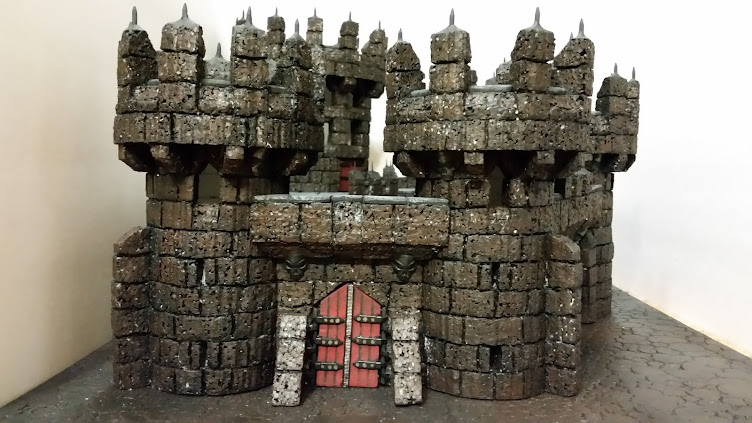Anyway, I tend to switch back and forth between resource packs as well as survival and creative mode. That alone is a great feature, since you may want to build instead of fighting to stay alive or mine a lot.
Above is a screenshot of the front of my hill shelter. It may look simple and not very asthetically pleasing yet in game play it is secure and easily accessible for me. The overhang prevents any mobs from falling on my doorstep and I have a trench that I can jump over and trap any mobs from trying to get to my door. Eventually, I will either build out from this bunker and add on to it or move on to a better location and build some other sheltering house of sorts.
I have watched various videos on how to build and redo or improve upon structures that are automatically generated by the game, which is why I thought of doing a project of improving the look of a minecraft village that I discovered in a creative world that I was exploring.
Above is the bird's eye view of the village I was referring to. After exploring the area I decided to put a temporary wall up to section off the area and to see what I have to work with. I also wanted to keep mobs out and to help condense the area, so that I would not wander too far from its borders. The village consisted of a few houses, a few crops, a forge, and a well.
Now I am going to address issues about the village that I think need improvement. Of course keep in mind that this was generated by the computer and not built.
First, the buldings are up against the pathways and raised, so they need steps to allow access to the entrances. This clutters the nicely wide walkway and makes it look crowded.
Second as shown above, although I like that this village is on a slightly elevated section of land, the buildings are poorly placed in relation to the slope of the land. As you can see from this angle the fenced in area is right up against a wall of earth. The backyard of the house above has no fence or such to prevent from falling into it. How did that guy get on his roof and why bother?
Finally, you can see a variety of structures here and I don't understand why their shapes and sizes are drastically varied as such. They all look as if they were constructed by different people with the materials they had available. Even with the textured blocks they still look a little flat. This is the other side of the village with no definitive pathway into the village and the houses are too close together.
Although it is not broken and it works for minecraft, I think in time I could fix it, make it look and function better.










































